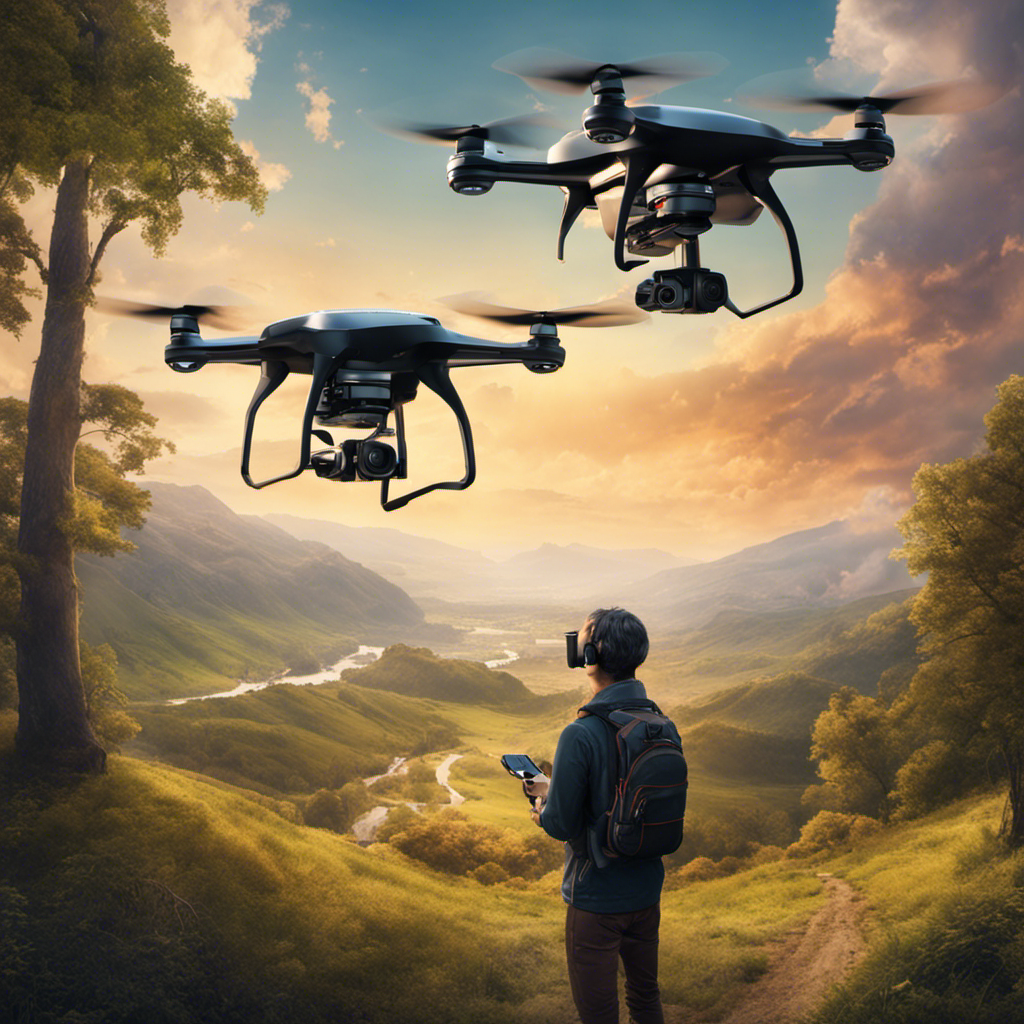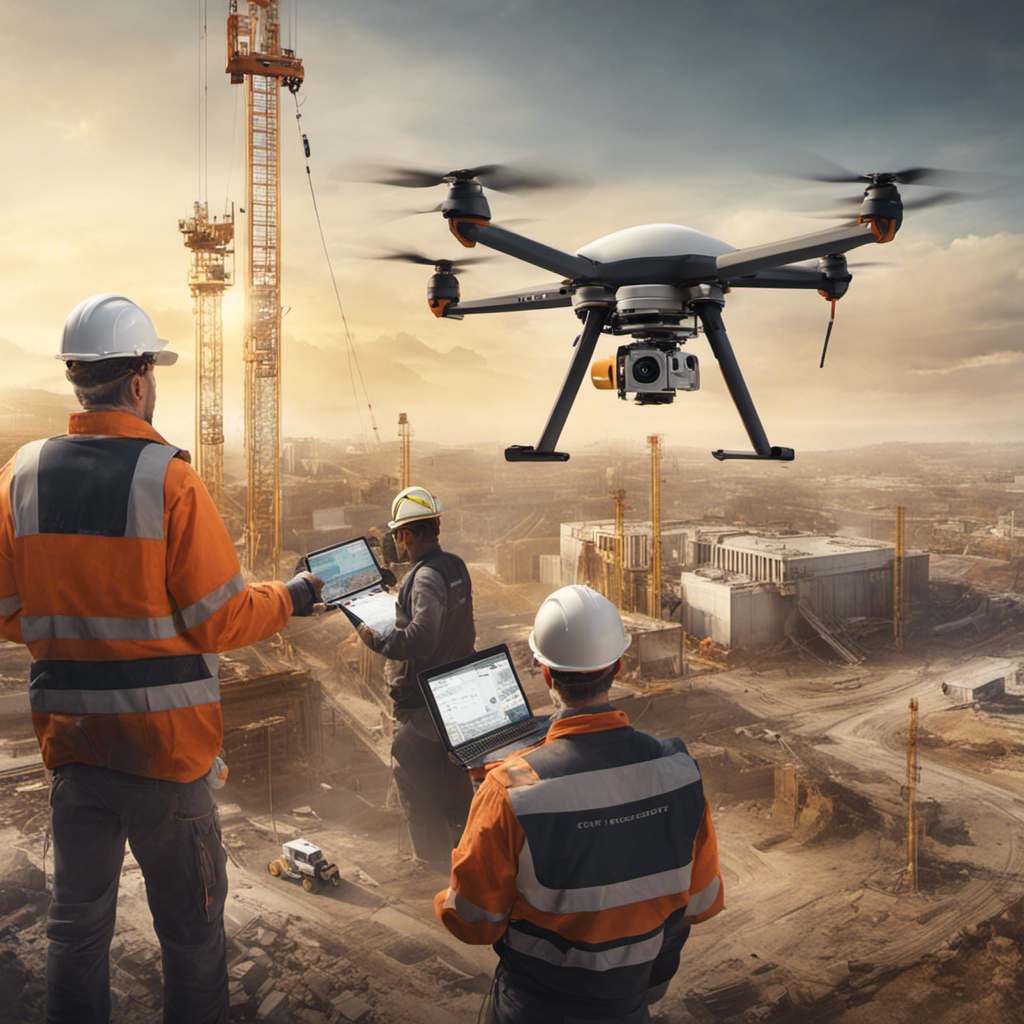Are you ready to take flight and capture stunning aerial images like a bird soaring through the sky? Operating a drone for aerial imaging is your ticket to freedom and creative expression.
Just imagine, with the right knowledge and skills, you can unleash your artistic vision and capture breathtaking photos and videos from above. But remember, with great freedom comes great responsibility.
It’s crucial to understand the ins and outs of operating a drone, from mastering the controls to ensuring safety precautions. So, buckle up and get ready to embark on an exhilarating journey as we guide you through the art of operating a drone for aerial imaging.
Let’s soar together!
Key Takeaways
- Familiarize yourself with the drone’s controls and settings
- Complete a thorough pre-flight checklist before each flight
- Master essential flight maneuvers for capturing aerial images
- Adjust camera settings for high-quality aerial images
Drone Controls and Navigation
To control and navigate your drone for aerial imaging, you need to familiarize yourself with its controls and settings. Understanding how to operate your drone is crucial for capturing stunning aerial images.
When flying your drone, make sure to adjust the camera settings to optimize the image quality. Experiment with different shutter speeds and shooting in manual mode to have full control over your aerial photography.
Being a skilled drone pilot means having a good understanding of your drone’s capabilities and limitations. Additionally, keep an eye on battery life to ensure a safe flight and always fly within the legal limits and regulations.
Pre-flight Checklist and Safety Measures
Before taking off with your drone for aerial imaging, it’s essential to complete a thorough pre-flight checklist and implement necessary safety measures.
This checklist ensures that your drone is in optimal condition and that you’re well-prepared for a successful flight.
Start by checking the drone’s battery level and ensuring it’s fully charged.
Inspect the propellers for any damage or wear and check that they’re securely attached.
Verify that the GPS signal is strong and that the camera settings are appropriate for the aerial imaging you intend to capture.
Additionally, confirm that the weather conditions are suitable for flying and that you’re aware of any no-fly zones in the area.
Flight Maneuvers and Techniques
Master essential flight maneuvers and techniques to capture stunning aerial images with your drone.
Flying a drone for aerial imaging requires skill and precision. To capture the best shots, it’s important to practice various flight maneuvers and techniques.
One important maneuver is the orbit, where you circle around a subject to capture it from different angles.
Another useful technique is the flyby, where you smoothly fly past a subject to create a dynamic shot.
Additionally, mastering the hover maneuver allows you to stabilize the drone in one position, enabling precise photography.
Other techniques to consider include adjusting the camera settings for different lighting conditions, using the drone’s GPS functions for accurate positioning, and practicing smooth and controlled movements.
Camera Settings and Composition
Adjust your camera settings and compose your shots for optimal aerial imaging results.
When operating a drone for aerial imaging, it’s crucial to pay attention to your camera settings to capture high-quality images. Use the DJI Go application to adjust color settings and exposure for both JPG and RAW photos. Keep exposure settings on automatic or use the tap exposure feature for automatic adjustment. To ensure proper exposure, utilize features like zebra stripes and histogram.
When composing your shots, apply the rule of thirds and incorporate leading lines to create balanced and visually appealing compositions. Consider shooting during the golden hour for soft, warm light and long shadows, or experiment with backlighting for dramatic effects.
Post-processing and Editing Techniques
To enhance the quality of your aerial images, utilize a few key post-processing and editing techniques.
After capturing photos with your drone, it’s important to optimize them using photo editing software. Adjust the colors, contrast, and sharpness to make your images more visually appealing. Play around with white balance, exposure, and saturation to achieve the desired look.
Additionally, crop and straighten your photos to improve composition and eliminate distractions. Use the healing or cloning tool to remove any unwanted objects or sensor dust spots.
Experiment with different filters and effects to add a unique style to your drone photos.
Frequently Asked Questions
How Are Drones Used in Aerial Photography?
Drones are used in aerial photography to capture unique perspectives and stunning shots from above. They offer cost-effective alternatives, versatile technology, and the ability to capture patterns and shapes that highlight the distinct perspective of aerial photography.
How Do You Operate a Drone Step by Step?
To operate a drone step by step, first, familiarize yourself with drone safety precautions and essential equipment. Then, learn about flight planning, controls, navigation, and maneuvering. Capture high-quality images, consider weather conditions, troubleshoot issues, and understand legal considerations. Lastly, maintain and care for your drone.
How to Start a Drone Aerial Photography Business?
To start a drone aerial photography business, you need to understand drone licensing requirements, develop marketing strategies, acquire the necessary equipment, find clients, set pricing, consider legal aspects, learn photography techniques, build a portfolio, network, and expand into other markets.
How Do I Get Started in Aerial Photography?
To get started in aerial photography, you’ll need essential equipment, like a drone and smartphone for composition. Choose the right drone for imaging, follow safety precautions, and explore stunning locations. Enhance images with editing techniques and be aware of FAA regulations. Plan successful shoots and tackle common challenges. Get inspired!




